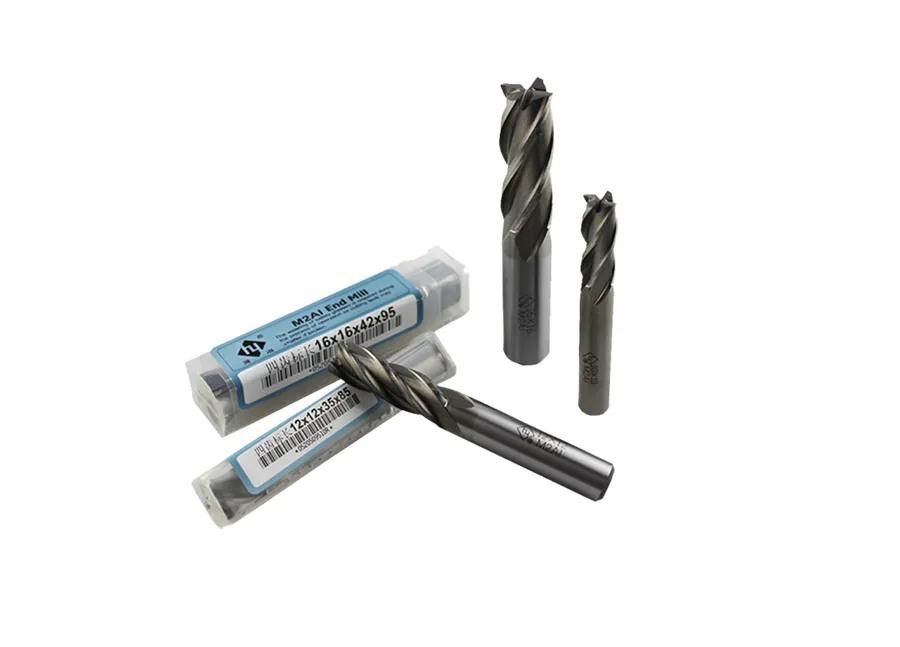Milling Cutter – Common Types and Selection Guide
Milling cutter plays a vital role in CNC machining. Understanding the different types of milling cutter tools and their applications is crucial for achieving precise and efficient machining results.
What is Milling Cutter?
A milling cutter is an essential component of a CNC milling machine or CNC machining center. It is a rotary cutting tool for scraping material out of a workpiece. It consists of several cutting edges, called teeth or flutes, arranged around the circumference of a cylindrical or disk-shaped body.
How is the Milling Cutter Used in Milling Machines?
Milling machines employ milling cutters to remove material from a workpiece, creating desired shapes and finishes. The milling cutter rotates while its cutting edges or teeth engage with the workpiece, generating chips and producing the desired form. Milling cutters are versatile tools used for operations such as facing, slotting, contouring, profiling, and pocketing. Milling machines can hold single or multiple cutters at the same time to speed up the cutting process and quickly create the desired shape.

What are the Types of Milling Cutter?
There are various types of milling cutters available,each designed for specific applications and machining requirements.Here are some commonly used types:
| Types | Descriptions | Applications |
| End Mill Cutter | End mills have cutting teeth on the end face and/ or the periphery. | They are commonly used for profile milling, plunging, ramping, and slotting operations. |
| Roughing End Mill Cutter | Roughing end mills have multiple flutes and coarse tooth spacing. | The purpose of this design is to remove large amounts of material more efficiently in roughing operations. |
| Face Mill Cutter | Face mills have cutting teeth on the periphery and the face of the cutter. | They are primarily used for face milling operations, creating flat surfaces on the workpiece. |
| Slab Milling Cutter | Slab mills are large, flat-bottomed cutters. | They are used for machining large surfaces or creating wide slots. |
| Fly Mill Cutter | Fly cutters are single-point cutting tools with a large, disc-shaped cutter head. | They are typically used for facing operations and producing flat surfaces. |
| Shell Mill Cutter | Shell mills have a cylindriacl body with cutting teeth on the periphery. | They are suitable for heavy work, such as roughing and bagging. |
| Slot Mill Cutter | Slot milling cutter, also known as slot end milling cutter, the cutting teeth are arranged in a straight line or spiral shape, suitable for a variety of different width processing needs. | They used for creating slots or grooves in the workpiece,such as keyway cutting, T-slot milling,and general slotting operations. |
| Side and Face Cutter | Side and face cutters.also known as shell end mills, feature cutting teeth on the side and ther face, allowing for both peripheral and face milling operations. | They used for tasks such as facing large surfaces, milling shoulders, and machining complex profiles. |
| Ball Nose Cutter | Ball nose cutters have a roundedend, making them suitable for contouring and 3D machining. | They are commonly used for creating curved surfaces and intricate shapes. |
| Woodruff Cutter | Woodruff cutters have a half-moon-shaped profile. | They are used for cutting keyways in the workpiece. |
| Thread Millin Cutter | Thread milling cutters are used for producing internal or external threads on the workpiece using a helical motion. | They come in varous designs, including single-point thread mills and multi-flute thread mills. Thread milling cutters can create threads of different profiles,such as metric, UN,NPT, and ACME. |
What Materials Can Be Used for Milling Cutters?
To withstand the cutting forces and heat generated during machining, milling cutter material hasa wide range. Some common materials include:
1.Carbon Tool Steel:
Offers good toughness and wear resistance.
2.High-Speed Steel(HSS):
Provides excellent heat resistance and durability.
3.Cemented Carbide:
Known for high hardness and wear resistance.
4.Ceramic:
Offers exceptional heat and chemical resistance.
5.Stellite:
Used for machining hard materials and for high-temperature applications.
Are there Any Tips for Selecting the Right Milling Cutting Tools?
Choosing the appropriate milling cutter is crucial for achieving desired machining results. Consider the following factors when selecting mill cutting tools:
- Milling Cutter Size and Diameter: Select based on the desired machining dimensions and the capabilities of the milling machine.
- Milling Cutter Power: Consider the power and capabilities of the milling machine to ensure compatibility with the chosen milling cutter.
- Selection of Milling Tool Body: Evaluate factors such as rigidity, vibration damping, and coolant delivery capability.
- Selection of Milling Tool Blade: Consider factors like cutting edge geometry, coating, and material suitability for the workpiece material.

U-Need is committed to providing high-quality CNC milling parts and CNC machining solutions. Contact us or send us an E-Mail (info@uneedpm.com) to explore our range of milling services and optimize your machining parts.
